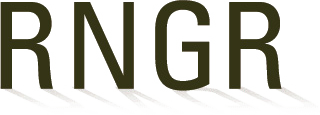
Antennaria (media)
|
Tara Luna USDI NPS - Glacier National Park West Glacier, Montana 59936 (406) 888-7835 http://plant-materials.nrcs.usda.gov/azpmc |
|
| Family Scientific Name: | ASTERACEAE | ||
|---|---|---|---|
| Family Common Name: | Sunflower Family | ||
| Scientific Name: | Antennaria media Greene | ||
| Common Synonym: | Antennaria alpina (L.) Gaertn. media | ||
| Common Name: | Alpine Pussytoes | ||
| Species Code: | ANTMED | ||
| Ecotype: | Subalpine meadows, Logan Pass, 2032 m elev. | ||
| General Distribution: | A. media is a circumboreal species, occurring in subalpine to alpinemeadows and slopes in stony soils. | ||
| Propagation Goal: | plants | ||
| Propagation Method: | seed | ||
| ProductType: | Container (plug) | ||
| Stock Type: | 160 ml containers | ||
| Time To Grow: | 6 Months | ||
| Target Specifications: | Height: 2 cm, Multiple leaves<br> Caliper: n/a<br> Root System: Firm plug in containers | ||
| Propagule Collection: | Seeds are collected in late August at high elevations when achenes are easily separated from receptacle. Seeds are black at maturity. Seeds are collected in paper bags and kept in a well ventilated drying shed during the drying process and prior to cleaning. | ||
| Propagule Processing: |
Seeds are cleaned with a hammermill and run over by an office clipper at NRCS. Seed longevity: estimated up to 5 years for this genus. Seed dormancy is classified as non dormant. Seeds/Kg: 14,520,000/ kg % Purity: 100% % Germination:80 % |
||
| Pre-Planting Treatments: | Seeds are placed into 80 to 150 day cold, moist stratification. | ||
| Growing Area Preparation/ Annual Practices for Perennial Crops: |
Outdoor nursery growing facility. Sowing Method: Direct Seeding. Seeds are surface sown in late fall in conetainers. Conetainers are irrigated thoroughly prior to stratification. |
||
| Establishment Phase: | Antennaria seedlings appear to germinate more slowly than many other forb species. Widely fluctuating temperatures during germination of this high elevation species may account for the higher fill rate of outdoor nursery sown seeds vs. greenhouse grown material. | ||
| Length of Establishment Phase: | 4 weeks | ||
| Active Growth Phase: |
Once seedlings are established, plants develop rapid shoot and root growth 2 to 4 weeks following germination. Plants are fertilized with 20-20-20 NPK liquid fertilizer at 100 ppm bi-weekly during the growing season. Plants are mat-forming and quickly fill containers during the rapid growth stage. |
||
| Length of Active Growth Phase: | 8 weeks | ||
| Hardening Phase: | Plants are fertilized with 10-20-20 NPK liquid fertilizer at 200 ppm in early fall; pots are flushed with water, irrigation is gradually reduced through September and October. | ||
| Length of Hardening Phase: | 4 weeks | ||
| Harvesting, Storage and Shipping: |
Total Time To Harvest:6 months Harvest Date: July Storage Conditions: Overwinter in outdoor nursery under insulating foam cover and snow. |
||
| Length of Storage: | 5 months | ||
| Other Comments: |
Vegetative Propagation: Divisions of established nursery stock can be done as a method of increase if seeds are unavailable. Seeds require light for germination. If direct seeding onto restoration sites, seeds must be rolled or pressed into prepared seed beds. Raking or burying seeds will result in poor establishment. |
||
| References: |
Flora of the Pacific Northwest, Hitchcock and Cronquist, Univ. of Washington Press, 7th printing, 1973. Seed Germination Theory and Practice, Second Edition, Deno, Norman, published 1993. Glacier Park Native Plant Nursery Propagation Records, unpublished. Seeding Rate Statistics for Native and Introduced Species, National Park Service, Hassell, Wendel, April 1996. |
||
Citation:
Luna, Tara; Evans, Jeff; Wick, Dale; Hosokawa, Joy. 2008. Propagation protocol for production of Container (plug) Antennaria media Greene plants 160 ml containers; USDI NPS - Glacier National Park West Glacier, Montana. In: Native Plant Network. URL: https://NativePlantNetwork.org (accessed 2025/06/08). US Department of Agriculture, Forest Service, National Center for Reforestation, Nurseries, and Genetic Resources.









